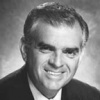When former Chief U.S. Weapons Inspector David Kay testified before Congress in January, much was made about what hasn't been found in Iraq. Though we haven't found piles of chemical and atomic bombs, the more complicated truth is that the U.S.-led search team is mounting undeniable evidence that Saddam Hussein's regime maintained an ambitious WMD program. With most media attention focused on what we haven't discovered, it's worth considering what the Iraq Survey Group has actually determined to date.
Dr. Kay's most important finding was that Iraq, which "was in clear and material violation of 1441"-the United Nations Security Council resolution that gave Baghdad one last chance to come clean-maintained activities "that would allow them to restart the program as soon as they got rid of us."
Postponing a massive stockpile susceptible to international inspectors, Saddam Hussein's weapons makers designed his secret WMD program "to allow future production at some time." Iraq maintained research sites, documents, equipment, and, most importantly, a cadre of experienced weapons scientists that could reestablish and run production lines once the U.N. tired of sanctions. Dr. Kay reckons Iraq stockpiled these soft assets instead because international inspectors are "not particularly good at unmasking" such ambiguous and small-scale resources. Once Iraq regained a delivery capability-for example, through its "very large unmanned aerial vehicle program"-providing the weapon agents would be "a relatively short order."
"We have documentary evidence and testimony," Kay explained, "that Saddam and [sons] Uday and Qusay asked in both 2000 and 2001 how long it would take to restart production of mustard and of VX nerve gas." What's more, Iraq had "a program to develop a substitute for a major precursor (i.e., a main ingredient) for VX using indigenous production capability and indigenous chemicals, so they would not have to import it."
Dr. Kay's group found even harder evidence that Iraq intended to restart its biological weapons program in due course. Included among hundreds of pieces of evidence are a prison laboratory complex-possibly used in human testing of biological weapon agents-that regime officials were explicitly ordered not to declare to the U.N., and strains used to produce biological warfare agents. In fact, Iraqi scientists had "moved ahead their anthrax capability," and had conducted unsanctioned work on weapons-applicable agents, such as ricin and Congo Crimean Hemorrhagic Fever, a rare and deadly virus that causes internal bleeding.
Dr. Kay also testified that after 2000, Iraq began the process of reconstituting its nuclear weapons program, renovating a research center at Al Tuwaitha, building new buildings, hiring more staff, and running physics experiments. "Fortunately," the chief inspector said, "Operation Iraqi Freedom intervened and we don't know how or how fast…the emerging program…would have gone ahead."
More proof of an ongoing WMD program might have been transported to Syria, now home to hundreds of Saddam Hussein's relatives and former henchmen. According to Dr. Kay, former Iraqi officials admitted that "a lot of material went to Syria before the war, including some components of Saddam's WMD program," assertions supported by intelligence showing containers were moved across the border. It's noteworthy that the 8,500 liters of anthrax the U.N. said Iraq had could fit into the kind of orange U-Haul trailer you pull with your sport utility vehicle, and that Iraq shares a 375-mile border with its western neighbor.
Other parts of the program may have literally gone underground, like the dozens of Russian-made fighter jets Iraq buried in the sand before advancing coalition troops. With more than 168,000 square miles, most of it desert, Iraq is bigger than California. "It is important to keep in mind," Dr. Kay cautioned in October "that even the bulkiest materials we are searching for, in the quantities we would expect to find, can be concealed in spaces not much larger than a two car garage… Difficult to near impossible to identify with normal search procedures, such stocks could have been buried in the sand, warehoused in any thousands of unexplored storage facilities, or simply destroyed."
Dr. Kay did find that Iraq had a robust WMD program-only it looked different than what he expected. Connecting the dots, he also determined for himself that Iraq "was even more dangerous than we thought" and that the "world is far safer with the disappearance and the removal of Saddam Hussein." Saddam Hussein, Kay assures us, at some point intended to resume his WMD program in earnest.
A deadly weapons of mass destruction program, it turns out, doesn't require large factories and depots. IBI

